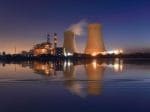India must make radical choices for a just energy transition, says S&P Global report
Fossil fuels will remain foundational in 2030 despite efforts to adopt clean energy, and India's path to net zero will be non-linear, multi-dimensional and multi-technology, says the report
 Workers clean photovoltaic panels inside a solar power plant in Gujarat, India.
Image: Reuters/Amit Dave
Workers clean photovoltaic panels inside a solar power plant in Gujarat, India.
Image: Reuters/Amit Dave
The trade-off between energy security and economic growth is both a challenge and opportunity for India, says a report by S&P Global, as the country tries to balance its energy security with affordability and sustainability.
India has had an “all of the above” sentiment with respect to energy transition, which means encouraging clean energy while not giving up on any kind of fossil fuel. This “all of the above” sentiment is finding traction in more countries around the world, rather than villainising any particular kind of fuel, says Rajeev Lala, director, upstream strategies and transformation, S&P Global. He explains that even as India focuses on adopting clean energy, the country is at 90 percent oil import dependence, and is also moving towards north of 70 percent import dependency on gas by 2045, from the 50-odd percent now.
To keep global warming to no more than 1.5°C—as called for in the Paris Agreement (2015)—emissions need to be reduced by 45 percent by 2030 and reach net zero by 2050. India has set a target to reach net-zero emissions by 2070, and major oil and gas companies in the country have similar individual targets between 2035 and 2050.
No fuel in the history of energy has been phased out completely, and there is no reason gas, oil, or coal will be phased out as countries pursue their net-zero targets, says Atul Arya, senior vice president and chief energy strategist, S&P Global Commodity Insights. According to him, energy transition in India will not be linear, but multi-dimensional, multi-technology, and different from the trajectories of the US, China, Europe and the rest of the world.
“Based on current data, fossil fuels will still remain foundational in 2030 despite energy transition in India,” says Gauri Jauhar, executive director, global energy transitions and clean tech consulting, S&P Global. “Fossil fuels today are about 76 percent in the energy mix, they will remain 76 percent in 2030.”
Also read: How are India's power companies handling the crucial renewables transition?
Countries have already started shifting their net-zero goalpost beyond 2050, she says, adding that despite that there has been a sentiment push towards clean energy and we will meet it sooner or later, if not in the time frame we have set currently.
India has set a target of having 500 GW of non-fossil fuel capacity by 2030. Our current capacity is close to 150 GW. “We want to triple our renewables capacity and we are nowhere near meeting it by 2030. We’ll meet it a few years after. Of course, things can accelerate, because there is a huge policy push,” says Jauhar.
In India, the power sector comprises 48 percent of the total carbon dioxide emissions. This is followed by the industrial sector at 21 percent, particularly hard-to-abate sectors like chemicals, iron and steel, and cement. Third is transport. New energy systems will have to move beyond business-as-usual scenarios, with sector-specific strategies for mature technologies like solar and wind that have to be accelerated and the new material technologies like carbon capture and hydrogen, says Jauhar.
“Radical choices will be needed to ensure that each technology option, mature or burgeoning, has been applied to its full potential to bend the emissions curve,” says the report. “Addressing the twin challenges of air pollution and climate change will help deliver a high-quality, high-growth economy to the world’s largest democracy.”


















